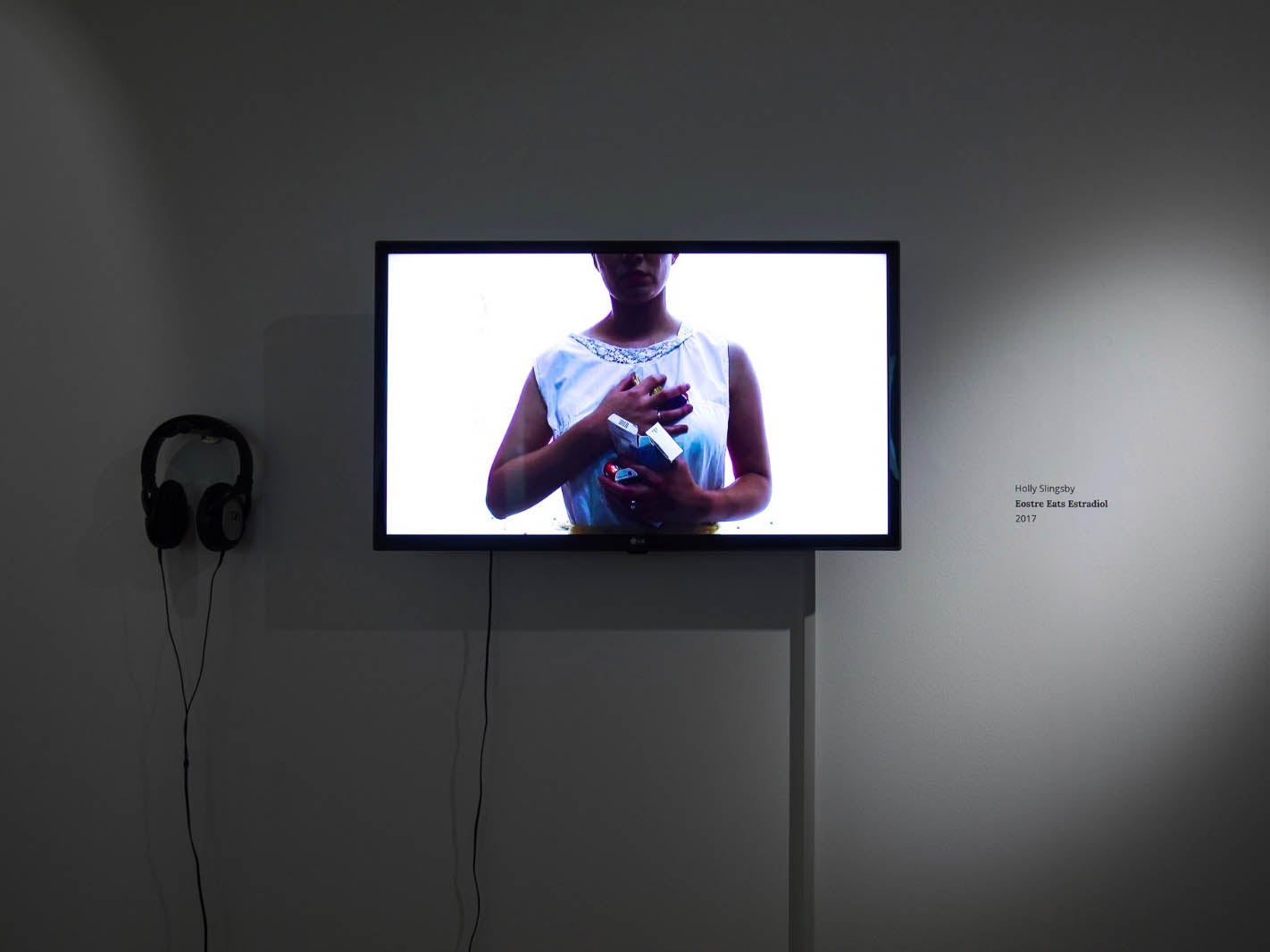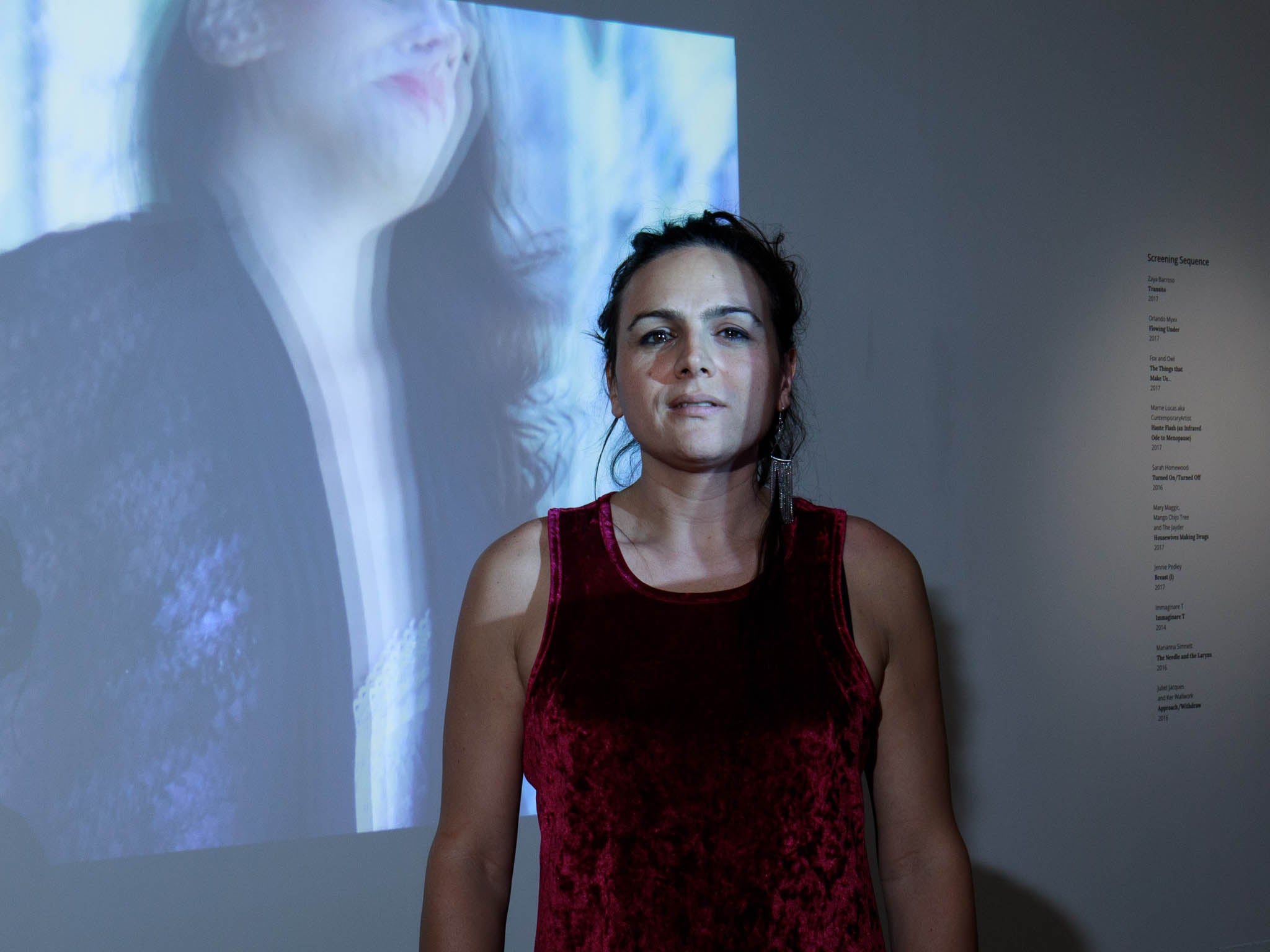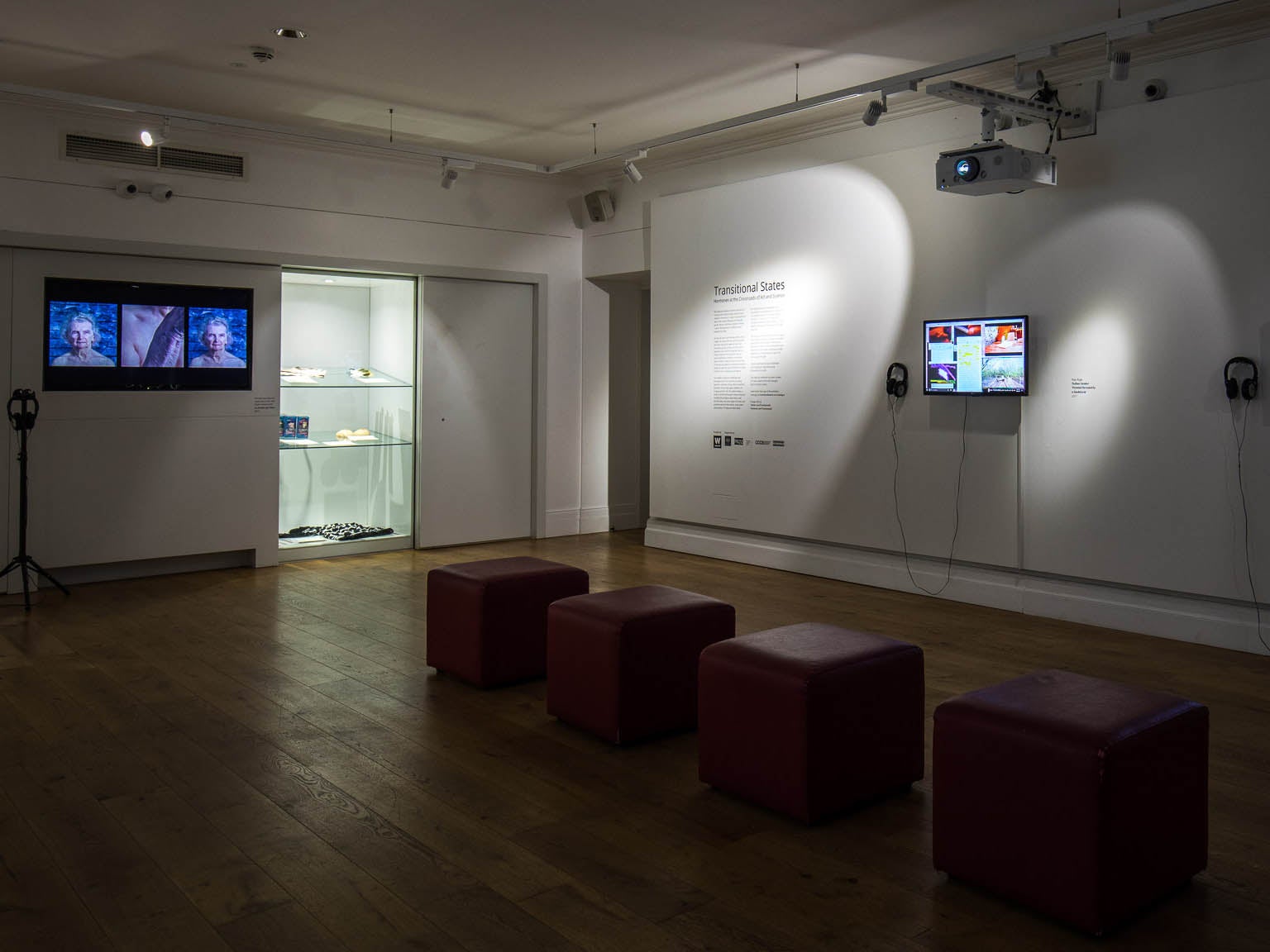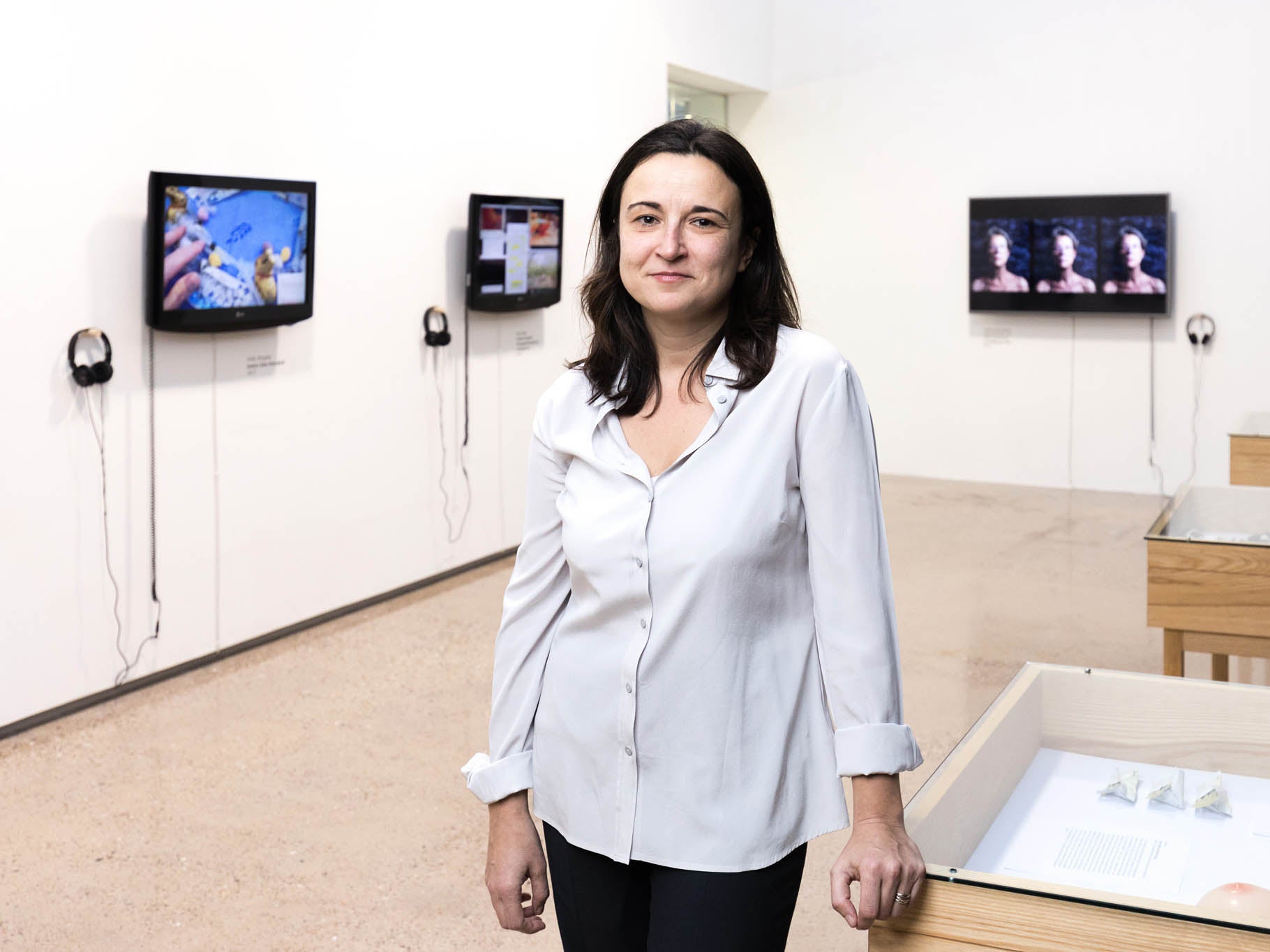'All that was wrong with me was a bit of chemistry and a boring wardrobe': Trans people and the powerful importance of Hormone Replacement Therapy
For many, the psychological and emotional effects are at least as significant as the physical impacts

Your support helps us to tell the story
From reproductive rights to climate change to Big Tech, The Independent is on the ground when the story is developing. Whether it's investigating the financials of Elon Musk's pro-Trump PAC or producing our latest documentary, 'The A Word', which shines a light on the American women fighting for reproductive rights, we know how important it is to parse out the facts from the messaging.
At such a critical moment in US history, we need reporters on the ground. Your donation allows us to keep sending journalists to speak to both sides of the story.
The Independent is trusted by Americans across the entire political spectrum. And unlike many other quality news outlets, we choose not to lock Americans out of our reporting and analysis with paywalls. We believe quality journalism should be available to everyone, paid for by those who can afford it.
Your support makes all the difference.“It's like moving from black and white into technicolour," Carrie says of her time since being on synthetic hormones.
“My basic operating level was and is much, much happier than it was pre-hormone replacement therapy (HRT),” the 45-year-old said. “I’m the kind of person I used to find really annoying. A few months into my HRT my brother said ‘I’m fine with the trans stuff. It’s the cheerfulness that freaks me out.’
“The main benefit for me is I no longer need anti-depressants after years of severe depression. Turns out all that was wrong with me was a bit of chemistry and a boring wardrobe.”
Carrie, a transgender woman, is currently taking estradiol patches and finasteride pills, drugs that are both part of her HRT. She has been on hormones for eight months in total and, as well as the physical changes, has seen a dramatic improvement in her mental health and overall wellbeing.
For many transgender people, taking hormones or hormone blockers is an important decision, and one that can potentially save lives. For cisgender people - those who are not trans - using hormones is pretty normalised, for example in the use of contraceptives. But it is not widely understood why transgender people take hormones and how this can aid transitioning.
Undergoing HRT can be difficult and expensive and with NHS waiting times lasting years, many resort to DIY methods that can be dangerous. But a new exhibition aims to create a space which encourages society to explore people’s relationship with hormones and hormone therapy, particularly for those who are trans.
We all have hormones, often we take them for granted
Transitional States, taglined “hormones at the crossroads of art and science” opened in London last week and primarily focuses on trans identity, menopause, birth control and the impact hormones can have both physically and mentally.
“We all have hormones, often we take them for granted,” said Zaya Barroso, whose artwork Transito is on display at the exhibition. “It’s bringing recognition to how important hormones are to us as a society.”
Zaya, a non-conforming transgender woman, describes “being free in your own body” after being on HRT as “the most amazing experience”.
“It gives calmness and peace knowing there are only the hormones you want in your own body,” she said.
Her work, a self-composed song and accompanying music video, “was an act of self love, of survival. It reflects me coming out of nightlife into daytime,” she said.

The feeling of freedom after taking hormones is common. Scott Oliver, 20, describes feeling “a real sense of peace” since beginning HRT. He knew that he “wanted to be a boy” from around age five, but “the first time I accepted or learned that those feelings meant I was transgender was 14 or 15 years old”.
Scott is taking sustanon, a form of testosterone administered via monthly injections. There are two main types of HRT – masculinising and feminising, and these can be divided further into different hormones. These hormones can be administered in many ways – via injections, pills, patches, gel or via an implant.
Scott has been on sustanon, a masculinising hormone, for two months in total, but said he could already see the effects. “I have experienced a voice break, the beginnings of facial hair and some changes to my body’s general shape,” he said.
As well as hormones, there is also the option for transgender people to take hormone blockers. These are most often used by transgender children and teenagers to prevent the onset of puberty, before later moving to HRT.
Zan, 28, uses they/them pronouns and identifies as non-binary, a term that describes gender identities that do not sit within the parameters of “male” or “female”. They started taking anti-androgens “in a futile attempt of ‘this is fine, I don’t need hormones’”. But soon stopped taking blockers, and has now been on oestrogen, Estradiol Hemihydrate, for one year and seven months.
“Not that I’m religiously counting like everyone else or anything," they say.
A lot of people don’t seem to understand how bizarre transitioning as a non-binary person can be – how some parts of you don’t change enough yet others change too much
“A lot of people don’t seem to understand how bizarre transitioning as a non-binary person can be – how some parts of you don’t change enough yet others change too much."
But overall they seem happy with the changes.
“There has been a net improvement to my life,” Zan said. “I’ve gone from depression to just bog-standard dysthymia, no more emotional detachment, my weight doesn’t fluctuate as much, focus on day-to-day activities has increased, I’m more receptive to ideas and opportunities, and I think about the future more. I use a calendar now!”
For many transgender people, it is not just the physical changes that are of benefit – it is the psychological and emotional ones too. Scott says being on hormones has “improved [his] quality of life tremendously”.
“I feel that testosterone has had a positive impact on my mental health; the bouts of low moods and anxiety and agitation I previously felt occur far less frequently,” he said.
“I even feel that testosterone has improved my [physical] health – I am more motivated to take care of myself in terms of eating and sleeping right, and I’m gradually finding the confidence to re-engage with sports I love such as football and running – but this time in male teams and clubs.”

Many trans people describe improved mental health and general wellbeing after being on HRT, but the process does not come without its difficulties.
For Carrie, the main physical effect of being on HRT was developing breasts and her face “getting softer”. She also put on a lot of weight – a side effect of the prescription.
“I like myself a lot more but there’s a sadness too. I wish I’d known I could have changed my life so positively and so dramatically with such a minor tweak of my body chemistry,” she said. “If I knew at 20 what I know now at 45 I’d have fully transitioned.”
Carrie is currently taking hormones through a private prescription. Like many trans people, she is still waiting on the NHS for support with her transition. After being referred to the gender identity service 19 months ago and officially recognised by them as a transgender woman, she is yet to have her first appointment with the endocrinologist, a doctor who specialises in hormones.
In order to receive hormone therapy in the UK, transgender people must prove to their doctors that they are in fact trans.
Many apply to be approved for a gender recognition certificate (GRC). But the current process to obtaining one is lengthy and can be stressful; individuals must be diagnosed with gender dysphoria by a doctor, have lived outwardly as the gender they identify with for at least two years and present their case to a panel of “experts”.
The process of convincing medical professionals of an identity can take years, and many consider it too long and traumatising to wait for treatment that could potentially be life-saving.
I think [my hormones] help perpetuate a sort of prison that I only really begun to recognise when I initially came out.
Kae, 31, spent a year on a waiting list for a gender identity clinic, but after a couple of appointments the clinic stopped making contact.
“In spite of numerous calls, I never heard anything from then again,” they said.
“It was really exhausting knowing I would probably have to wait for another cycle of appointments through another clinic so I reached the decision to wait on that until I finished full time education.”
Kae is still considering whether to try for HRT again, but describes how they feel about the hormones currently going through their body: “I think they help perpetuate a sort of prison that I only really begun to recognise when I initially came out. I feel whoever I truly am can’t really be ascertained whilst my present constitution, so to speak, remains as it is.”
I felt that I had come to a break in the road where the only two options were to either take hormones, or most likely commit suicide
For each transgender person, the decision as to whether or not to take hormones is personal and can hold varying levels of importance.
Scott describes wanting to take synthetic hormones as a way to effect changes on his body that he had long been hoping for. “I had pushed myself physically and mentally to breaking point trying to conceal my feelings about my gender,” he said. “I felt that I had come to a break in the road where the only two options were to either take hormones, or most likely commit suicide.”
Various studies prove there is a direct link between starting HRT and improved mental health for trans people who choose to take hormones. Despite this, according to a patient survey conducted by the NHS in 2008, 46 per cent of transgender people were dissatisfied with the length of time it took to receive hormone therapy.
According to a survey by Stonewall released last year, almost half of young trans people have attempted suicide and 72 per cent have self-harmed at least once – leading many campaigners to ask why access to hormones for transgender people is not treated as more of a priority.
But even when healthcare is good, Zaya points out that getting hormones is not always such a smooth experience. “A doctor might give you a cocktail of drugs, but they don’t come with an explanation,” she said. “You feel quite excluded in the process.”
46 per cent of transgender people were dissatisfied with the amount of time it took to receive hormone therapy
She added: “You have to go to the hospital to get [HRT] – so there’s this strange feeling of ‘oh, you’re sick’”.
Doctors can be a life line for many trans people, providing the hormones they need to feel more themselves, but they can also be unhelpful, particularly when they do not understand the needs of transgender patients. The science behind hormone therapy can often contribute to this stigma – and historically, research into hormones has had some messy consequences.
“The production of synthetic hormones has been considered as either one of the most revolutionary innovations in medicine or one of the greatest experiments ever performed on humans, especially women,” says Dr Chiara Beccalossi, director of the Transitional States exhibition.
She notes that science can often reinforce stereotypes about sex, and that this along with the public perception of hormones can have a big effect on trans people’s sense of self. It can also have an effect on how doctors and those who are not medical professionals at all treat trans people.
Starting at the beginning of the 20th century to this day, hormone treatment has been used as a “cure” to homosexuality by those who believe that being gay is caused by hormonal “imbalances”. The pill and HRT have revolutionised choice for those who menstruate, but have proven time and again to have unpleasant, and often irreversible, side effects.
Research into hormones has sometimes been used to back up ideas of eugenics and “natural roles”, in terms of race, gender and sexuality. These ideas continue to this day, with modern society believing so strongly in the idea that there are only two genders, that intersex children are often “treated” with hormones long before they can consent to this happening, simply because they do not fit neatly into the boxes of what we consider to be “male” or “female”.
I am annoyed that I was put on oestrogen as a child, but I don't really blame anyone. The doctors were just trying to do what they thought they were supposed to do and my parents just did what they thought was best
Lola, 30, uses they/them pronouns and identifies as agender, which describes a person who does not identify as any gender. They stopped growing at the age of three and were put on hormone replacement therapy to aid development.
“I have septo-optic dysplasia which is an umbrella term for a disorder that affects your optic nerves and parts of your brain, usually resulting in a combination of blindness and hormone problems (because your pituitary is right behind your optic nerves). In my case, I’m blind in one eye and I have hormone deficiencies. I don’t produce growth hormone, thyroid hormone, as well as oestrogen and testosterone,” they said.
They were put on oestrogen at the age of 12 and have been on various hormones since. After switching to a trans-friendly endocrinologist two to three years ago they have also been taking testosterone. Looking back, Lola wishes the doctors had not made a decision to give them hormones, but instead waited until they were old enough to make a decision over what they wanted for their body.
“I am annoyed that I was put on oestrogen as a child, but I don’t really blame anyone. The doctors were just trying to do what they thought they were supposed to do and my parents just did what they thought was best.
“I still wish that I had the vocabulary when I was younger to understand that I was agender and I wish I would have had the freedom to wait and maybe forego my puberty. Even if it would have affected my bone development, I’d much rather have taken vitamin D instead of oestrogen or testosterone and I feel like my overall mental health would have been better,” they said.
As it stands the barrier to HRT is too high, so we have evolved a culture in which a de facto entry into it comes through self-medication
Lola says that being on oestrogen “drastically affected [their] body shape” and contributed to them growing a large chest they later had to have an operation for. This had “a huge impact on [their] daily mental health”.
Taking synthetic hormones is essential for Lola’s physical health. They came off oestrogen for four weeks in preparation for surgery and experienced menopausal symptoms.
“I’d love to go off oestrogen but I’d develop osteoporosis,” they said.
Lola added: “I originally went on testosterone because I have little to no body hair and I’ve always felt quite self-conscious about it.”
Since starting testosterone, they haven’t grown much hair but said “I feel quite strongly that, since all people produce both, I should be taking both.”
With medical experts often making ill-informed choices or being less than sympathetic, and with such long waiting times, some transgender people resort to self-medication. Most the people interviewed in this piece have self-medicated at some point.
Carrie was self-medicating for the first few months of her transition but moved to a private prescription when she “realised how daft and dangerous self-medication was”. She said the medication raised her blood pressure to “potentially lethal levels” but that she is healthy now that she is seeing a doctor.

“As it stands the barrier to HRT is too high, so we have evolved a culture in which a de facto entry into it comes through self-medication,” said Jenny, 47. She believes the waiting times and the “real life experience” requirement “need to be slashed” in order to tackle this.
“In many cases a patient can spend three years in the queue before they receive any hormones, and that is simply not acceptable,” she said.
Her doctor left her on “dangerously low” levels of oestrogen for over a year, before she moved to a different provider. She describes her experience as “a lot of grief” and as such has gone through “a significant medical complaints procedure”.
Zan has been self-medicating for most of their transition. “Just like many others, I’m still waiting for a letter from the GIC,” they said. They describe having “more social anxiety than before”, but other than that no negative changes.
The internet has made accessing DIY hormones much easier for transgender people, who often find them online. It has also provided a wealth of information about different kinds of hormones and information about transitioning.
There are charity websites, personal blogs and celebrity stories available with a quick search, as well as hundreds of “transformation” videos online showing people documenting their transitions.
Just like many others, I’m still waiting for a letter from the GIC
However, the first thing that comes up when googling the term “HRT” is an NHS page that states that it’s “a treatment used to relieve symptoms of the menopause”.
The whole first page of results throws up similar links – lots of information about how it can be used by those who are pre-menopausal, but nothing about how it can be used by transgender people.
The Transitional States exhibition, which will travel to Spain and Italy after its run in London, hopes to offer an alternative and show the public the range of uses of synthetic hormones. Dr Beccalossi argues that “we need more representation of trans people,” particularly in mainstream spaces like public art galleries.
“There’s a line I’ve heard a few times, ‘I’d rather be the ugliest woman at the party than the saddest man,’” Carrie says. “That really resonated with me. [My decision to take hormones] is a bit like the silence when somebody’s car alarm finally stops. A big kind of “aah, that’s better”.
You can catch Transitional States at the Peltz Gallery in London from 10 May – 11 June.
*Some names have been changed, or only first names used, to protect the people interviewed
Join our commenting forum
Join thought-provoking conversations, follow other Independent readers and see their replies
Comments